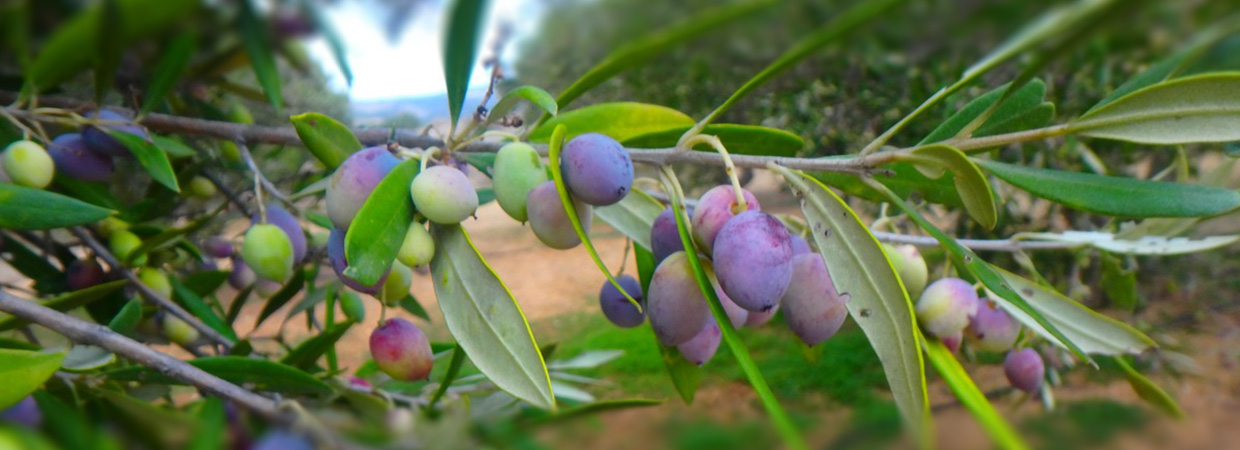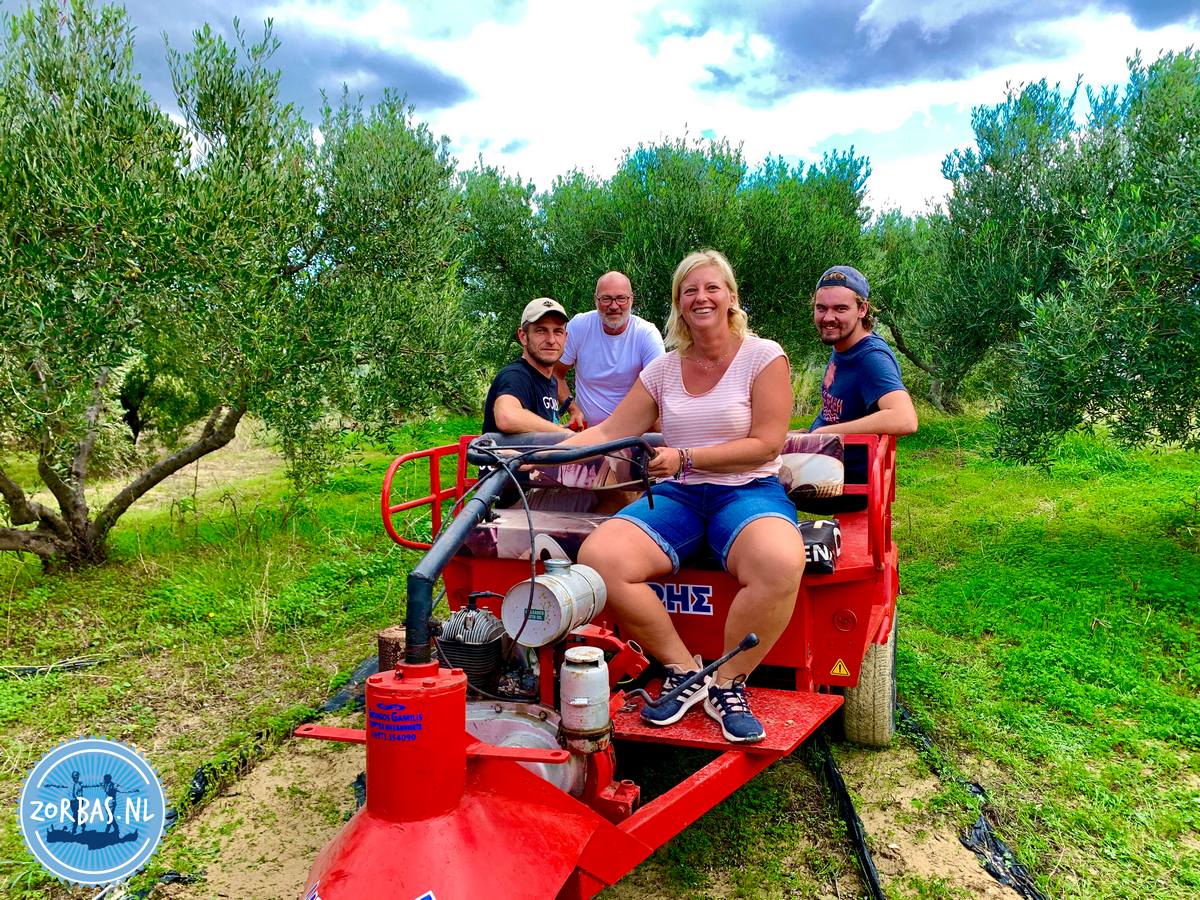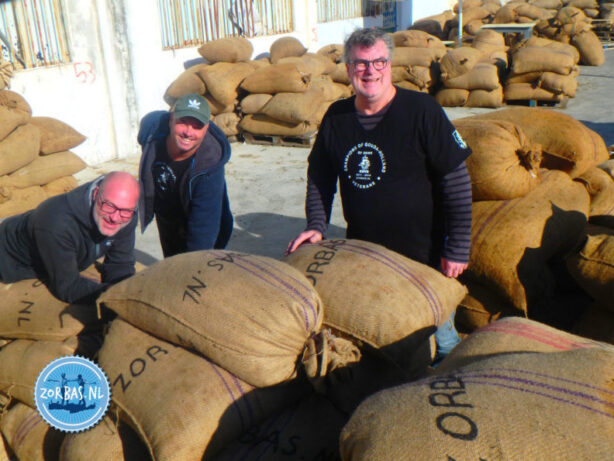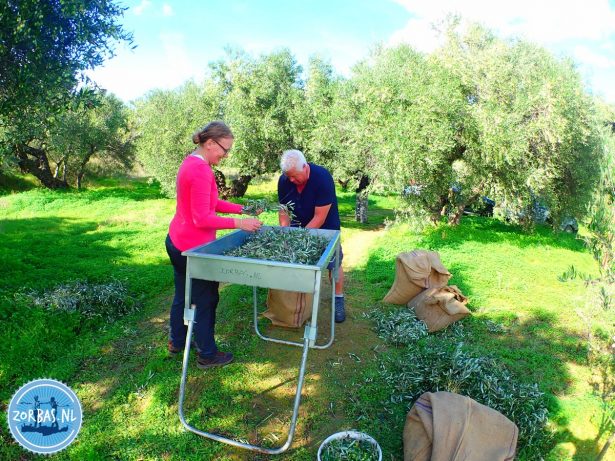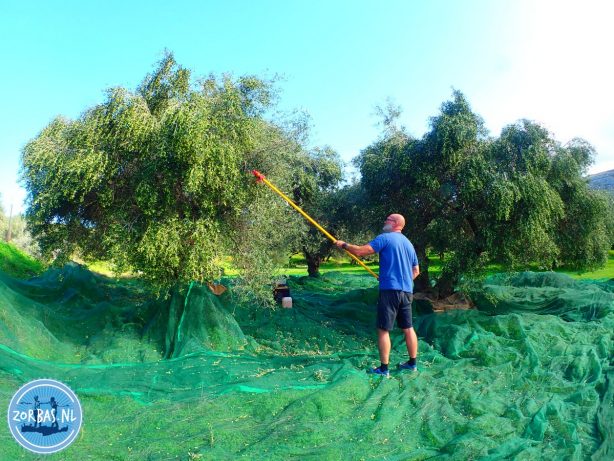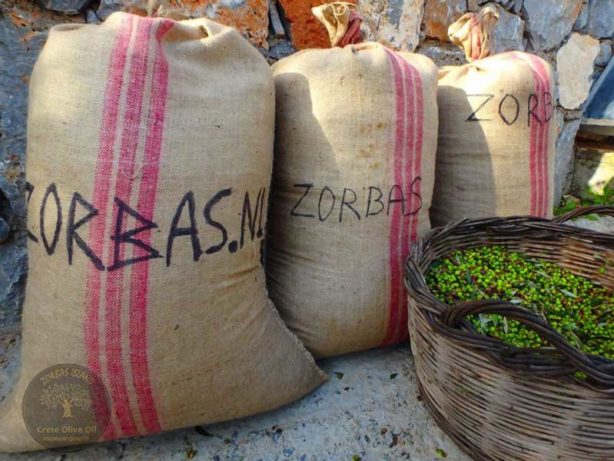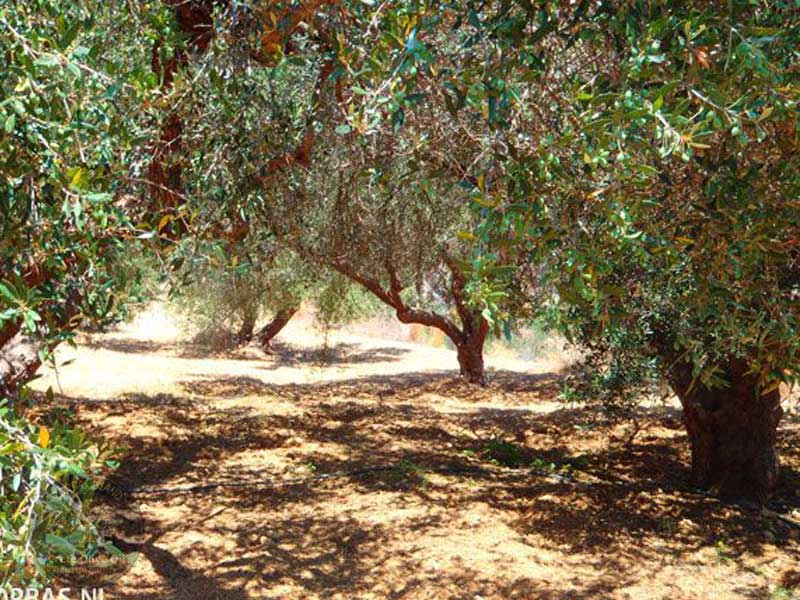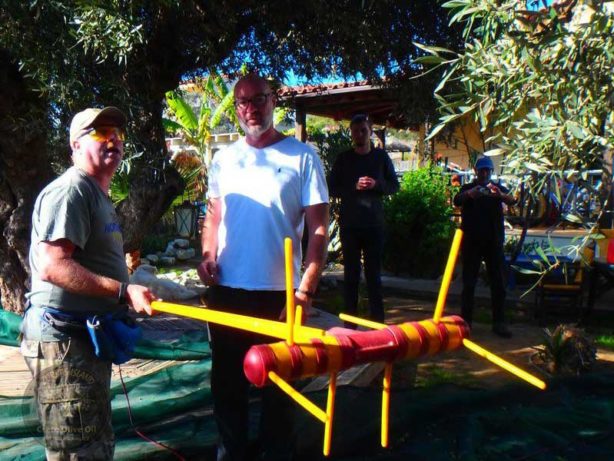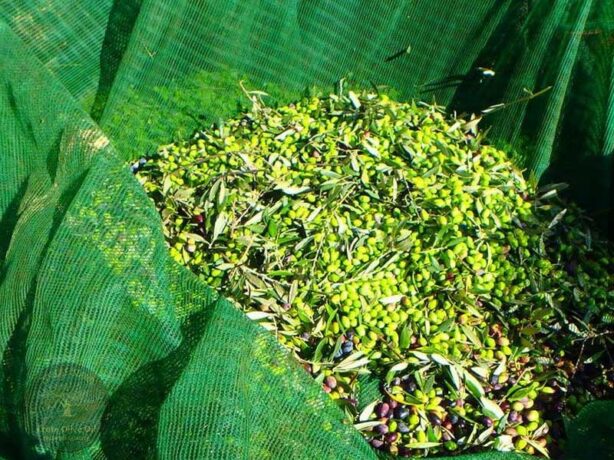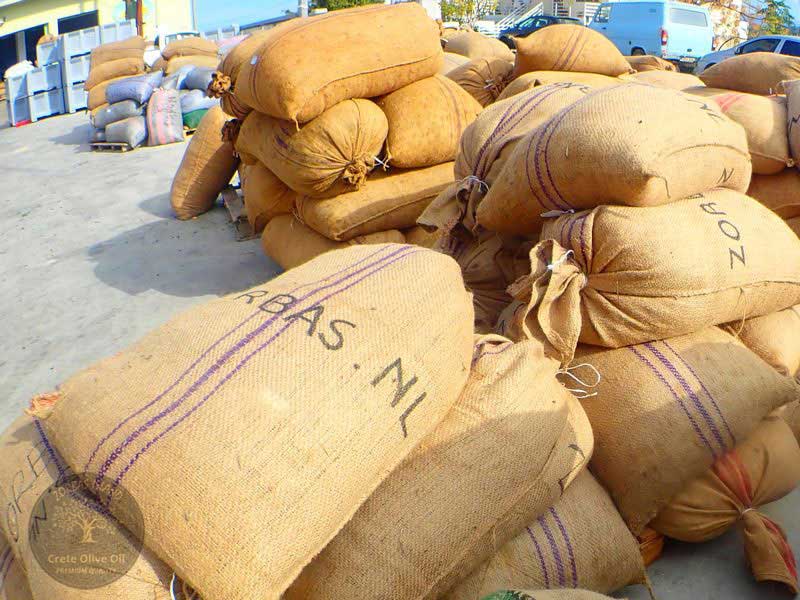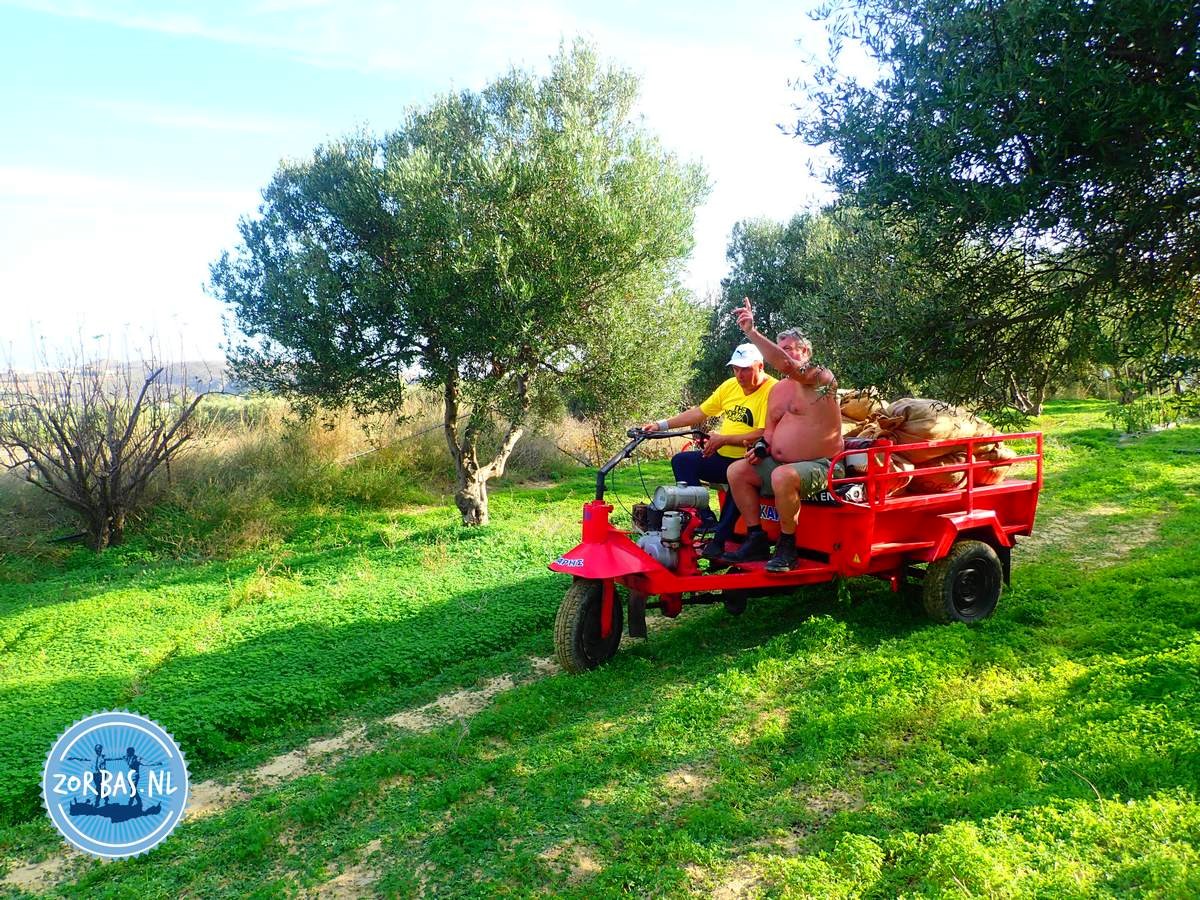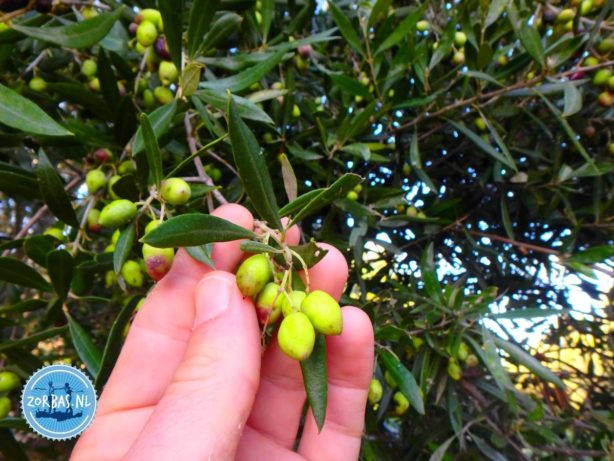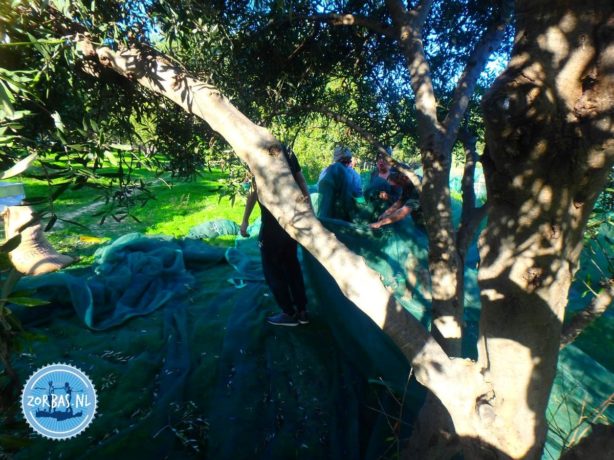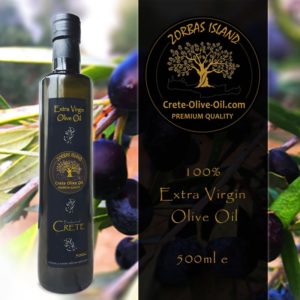Harvesting the olives
Olives must be harvested at the right time to obtain the largest possible amount of oil without increasing the acidity. The experienced olive grower knows exactly when the olives have to be harvested. It is a fact that if olives are picked too early, they may not contain oil. But on the other hand, if the olives ripen too long the oil volume continues to increase, but also the acidity. This has therefore a negative influence on the quality of the olive oil.
For many people it is difficult to see when is the right time to start harvesting the olives. We prefer to check if the olive factory opens in that same area. It will not open until the harvest can start. This may be different for each area, because not all the olives are ripe for harvest at the same time. In the mountainous areas of Crete, where it is colder, the harvest starts later. In the coastal area the harvest starts at the beginning of November and in the mountains, they might have to wait until the end of December.
The olive harvest is a labour-intensive job and that is why as many people as possible are asked to help. It is often a gathering of entire families in the fields. In general, the women and children are occupied in laying the nets and sorting the olives. The men beat the olives from the trees and carry the heavy bags to the car. Of course there are also necessary breaks for a cup of coffee and a picnic in the olive grove. Read also more about all the Health benefits of the Extra Virgin Olive Oil.
Harvesting the Crete Olives
To begin with, the farmers lay large nets under the tree. Because the olives hang firmly with a stalk to the branch, they must be beaten out. In the past this was only done with sticks, so completely manually. Only since about 20 years, there are machines to speed up the harvest. The harvesters consist of a portable generator and a T-shaped long stick with elastic rubbers attached to the top part. This stick is connected with a cable to the generator and as soon as it is switched on, the top part of the stick rotates quickly with the rubbers. These rubbers must beat the olives from the tree.
It is a tough job, because the sticks must be taken manually along the branches. If this is not done according to a specific technique, the tree will get damage and the production of olives in the future will decrease. The olives fall on the nets and are then collected. Before the olives are put in hessian sacks, as much as possible of the broken branches and leaves are removed. This is mainly to prevent damage to the bags, but also more olives fit in the sacks. Once the olives have been harvested, the hessian sacks are taken to the olive press in the village. That is quite an experience, because at the end of the day there is a coming and going of fully loaded cars. Large piles of bags are everywhere, even on the street.
Find us on Social Media
Watch our Olive Movies
This method of harvesting applies to the area where our olive trees are, in Central and Eastern Crete. In parts of West Crete there is also a different kind of olive tree. There the farmers lay the nets under the trees in October and the olives that fall from the trees are ripe and collected for consumption. If those olives are not ripe enough, they do not fall out of the tree and they are not beaten out either. Here it takes weeks before all the olives have fallen from the trees.

